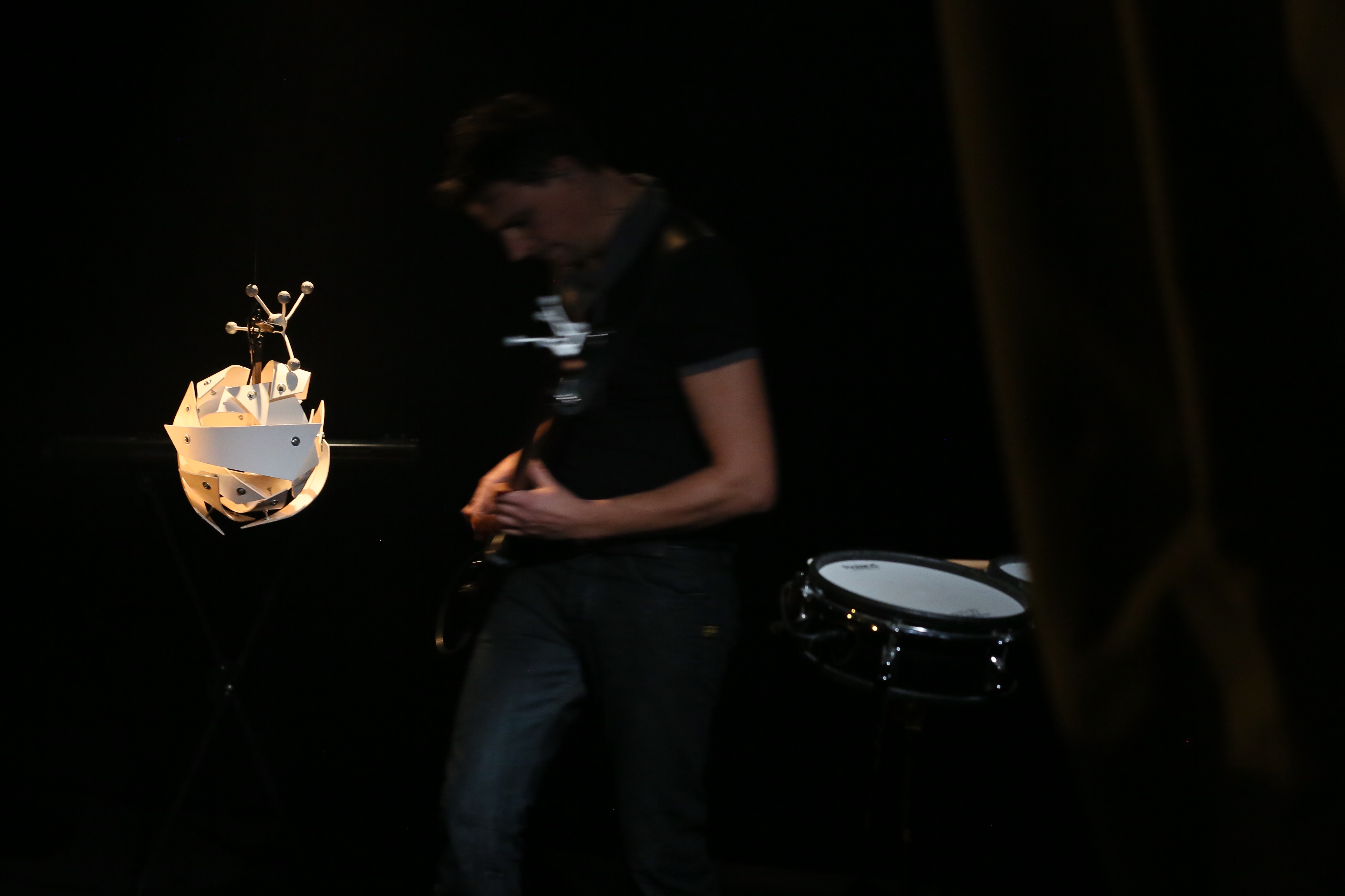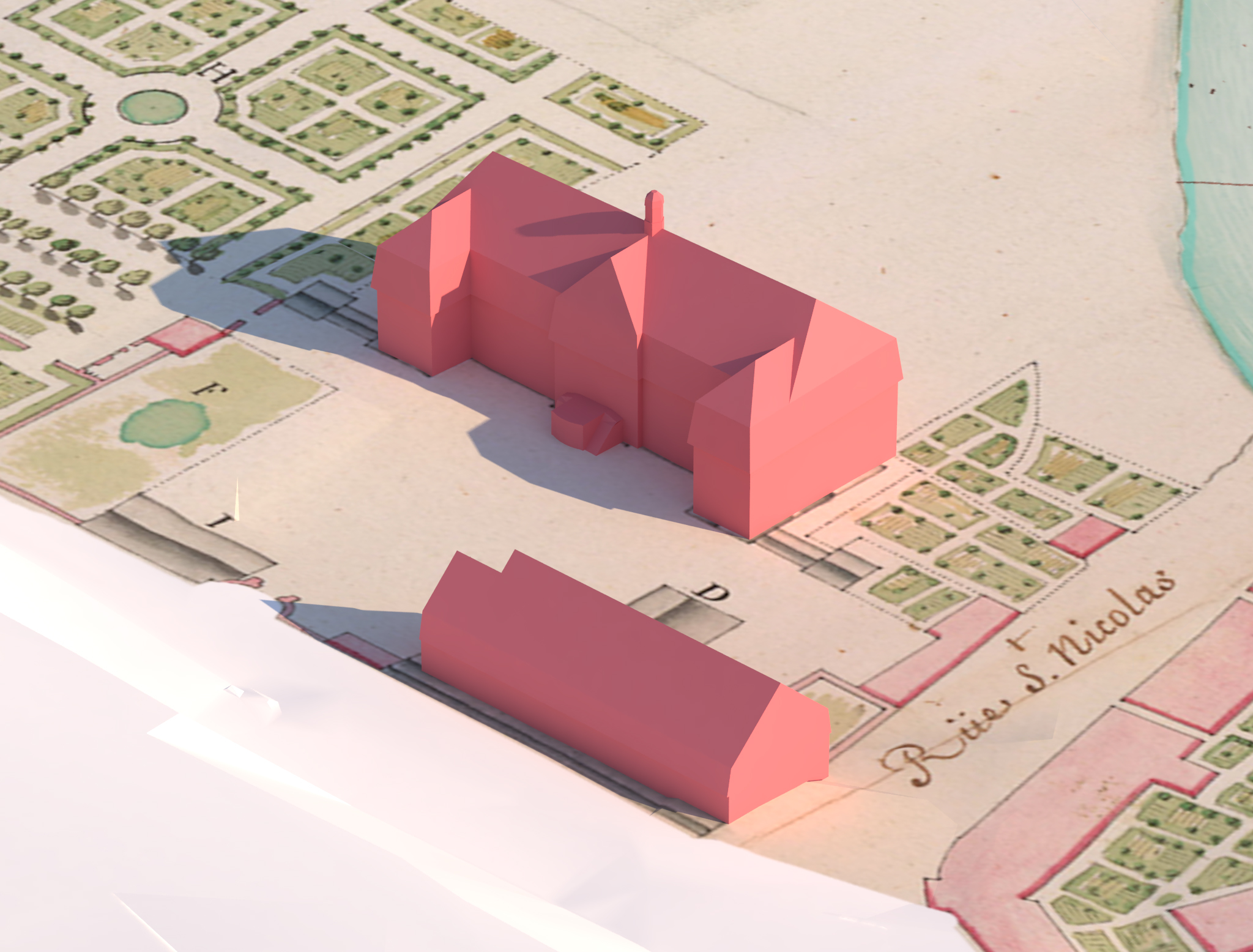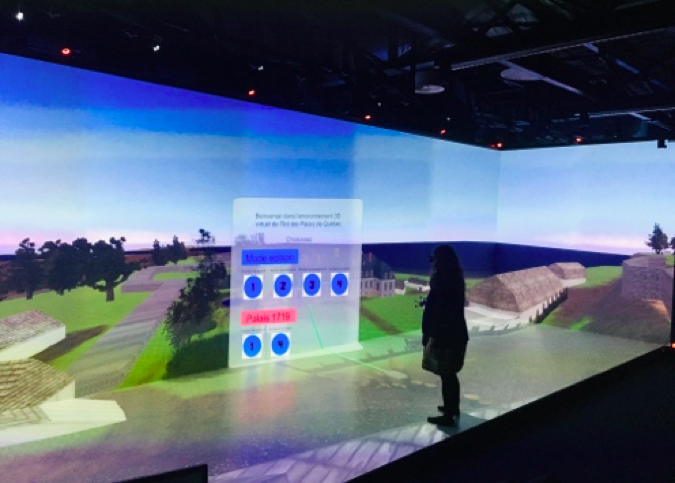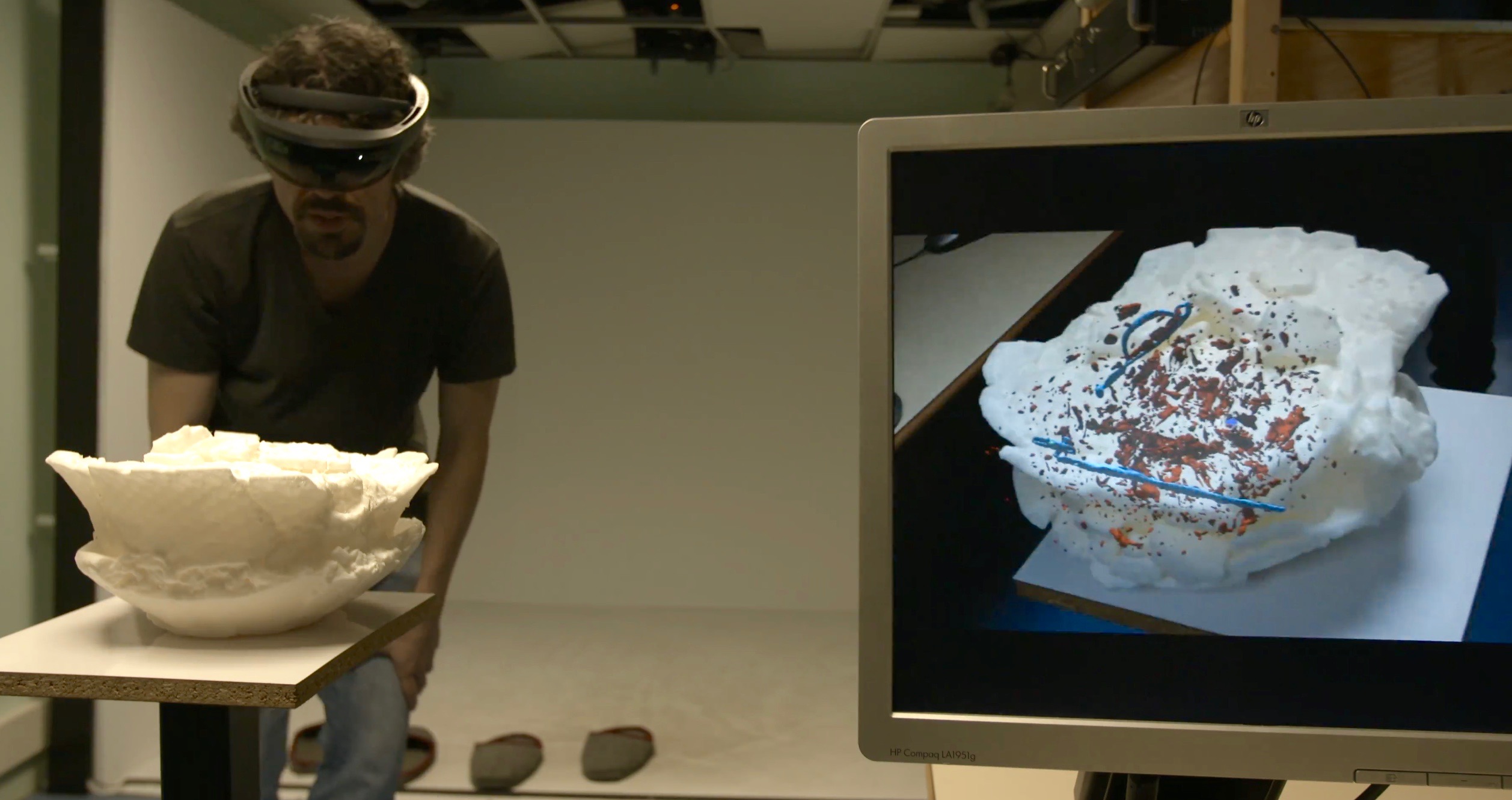Section: New Results
Cultural Heritage
Expressive potentials of motion capture in the Vis Insita musical performance
Participants : Ronan Gaugne [contact] , Florian Nouviale, Valérie Gouranton.
The electronic music performance project Vis Insita [10] implements the design of experimental instrumental interfaces based on optical motion capture technology with passive infrared markers (MoCap), and the analysis of their use in a real scenic presentation context (Figure 16). Because of MoCap’s predisposition to capture the movements of the body, a lot of research and musical applications in the performing arts concern dance or the sonification of gesture. For our research, we wanted to move away from the capture of the human body to analyse the possibilities of a kinetic object handled by a performer, both in terms of musical expression, but also in the broader context of a multimodal scenic interpretation.
This work was done in collaboration with Univ. Rennes 2, France.
Interactive and Immersive Tools for Point Clouds in Archaeology
Participants : Ronan Gaugne [contact] , Quentin Petit, Valérie Gouranton.
A framework is presented for an immersive and interactive 3D manipulation of large point clouds, in the context of an archaeological study [19]. The framework was designed in an interdisciplinary collaboration with archaeologists. We first applied this framework for the study of an 17th-century building of a Real Tennis court (Figure 17). We propose a display infrastructure associated with a set of tools that allows archaeologists to interact directly with the point cloud within their study process. The resulting framework allows an immersive navigation at scale 1:1 in a dense point cloud, the manipulation and production of cut plans and cross sections, and the positioning and visualisation of photographic views. We also apply the same framework to three other archaeological contexts with different purposes, a 13th century ruined chapel, a 19th-century wreck and a cremation urn from the Iron Age.
This work was done in collaboration with UMR CREAAH, France.
Making virtual archeology great again (without scientific compromise)
Participants : Ronan Gaugne, Valérie Gouranton [contact] .
In the past two decades or so, digital tools have been slowly integrated as part of the archaeological process of information acquisition, analysis, and dissemination. We are now entering a new era, adding the missing piece to the puzzle in order to complete this digital revolution and take archaeology one step further into virtual reality (VR). The main focus of this work is the methodology of digital archaeology that fully integrates virtual reality, from beta testing to interdisciplinary teamwork. After data acquisition and processing necessary to construct the 3D model, we explore the analysis that can be conducted during and after the making or creation of the 3D environment and the dissemination of knowledge. We explain the relevance of this methodology through the case study on the intendant’s palace, an 18th century archaeological site in Quebec City, Canada (Figure 18 left). With this experience, we believe that VR can prompt new questions that would never have occurred otherwise and can provide technical advantages in terms of gathering data in the same virtual space (Figure 18 right). We conclude that multidisciplinary input in archaeological research is once again proven essential in this new, inclusive and vast digital structure of possibilities [29].
This work was done in collaboration with UMR CREAAH, Inrap, France and Univ. Laval, Canada.
|
Evaluation of a Mixed Reality based Method for Archaeological Excavation Support
Participants : Ronan Gaugne [contact] , Quentin Petit, Valérie Gouranton.
In the context of archaeology, most of the time, micro-excavation for the study of furniture (metal, ceramics...) or archaeological context (incineration, bulk sampling) is performed without complete knowledge of the internal content, with the risk of damaging nested artifacts during the process. The use of medical imaging coupled with digital 3D technologies, has led to significant breakthroughs by allowing to refine the reading of complex artifacts. However, archaeologists may have difficulties in constructing a mental image in 3 dimensions from the axial and longitudinal sections obtained during medical imaging, and in the same way to visualize and manipulate a complex 3D object on screen, and an inability to simultaneously manipulate and analyze a 3D image, and a real object. Thereby, if digital technologies allow a 3D visualization (stereoscopic screen, VR headset ...), they are not without limiting the natural, intuitive and direct 3D perception of the archaeologist on the material or context being studied. We therefore propose a visualization system based on optical see-through augmented reality that associates real visualization of archaeological material with data from medical imaging [18] (see Figure 19). This represents a relevant approach for composite or corroded objects or contexts associating several objects such as cremations. The results presented in the paper identify adequate visualization modalities to allow archaeologist to estimate, with an acceptable error, the position of an internal element in a particular archaeological material, an Iron-Age cremation block inside a urn.
This work was done in collaboration with Inrap, France and AIST (National Institute of Advanced Industrial Science and Technology), Japan.






